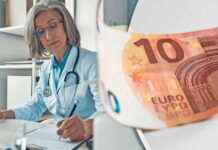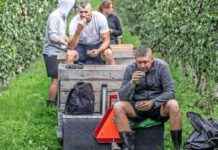English bull dogge, French bull dogge and boston terriereille was found in the study of genetic changes, i.e. mutations, which induces similar changes in their phenotype than in humans occur in very rare cases Robinowin syndrome. Research told the the Finnish Kennel club.Genetic changes found English bull dogge, French bull dogge and boston terriers. For example, mopseilla it is not. Unsplash
English bull dogge, French bull dogge and boston terriers share common external features wide and short skulls, short muzzles, wide apart, eyes as well as malformations of the spine and vertebrae. They are also races with tight spirals condensing cap screw him.
a Recently published study investigated the corkscrew tail genetic background. The study included 100 dogs, representing 21 different breeds. Dog of ten was the cap, screw him.
according to the Study, the English bull dogge, French bull dogge and boston terriers is a genetic changes, i.e. mutations. This DVL2 gene mutation is linked to the race of the skull, chest, neck and spine skeletal deformities. It also explains the abnormalities of the racial details.
mutation is the similarities between people occur, very rare Robinowin syndrome. Robinowin syndrome people external symptoms are similar to the three investigated dog breeds.
according to the Study, the English bull dogge and in French bull dogge is not found in the normal gene form at all. Boston terriers, normal is only six percent.
Just one solution
the Finnish Kennel club is just one way in which the situation can improve.
– gene error processing out of these breeds is possible only breed a cross between the eyes so that the normal genetic form of race it from the outside, the Finnish Kennel club to write.
as a consequence, the races should look different outer shape and appearance.
– DVL2 mutations, however, cause a race to the typical phenotype of only homotsygoottisena. Racial crossing might change substantially in the racial phenotype.
– Cross-breeds, for example the other bulldog type breeds would be an option, which would inherit the variation and mitigate the race occurring deviations. Different options should be consider along with race enthusiasts and also internationally.
the Current breed of representatives healthy the most selective-breeding does not necessarily guarantee that the offspring would be healthier.
– it is not Yet known what factors influence differences between individuals in out costumes. It is quite possible that the “healthier” investigated the parents produce offspring with strong changes occur, the Kennel club wrote to the news in.
the Finnish Kennel club according to the other short kuonoinen of races, skull shape is determined by other than the DVL2 gene provided by the artist. For example, mopsin skull shape and muzzle length can therefore be affected in the traditional breeding.
image displayed in the Robinowin syndrome related to the usual shorter upper limb and hands, overgrowth of the gums and the vertebrae developmental disorder. Samia A Temtamy, Mona S Aglan. Brachydactyly. Orphanet Journal of Rare Diseases. 3, 15. 2008. CC BY 3.0 Image siblings appear Robinowin syndrome-related changes of the face. Samia A Temtamy, Mona S Aglan. Brachydactyly. Orphanet Journal of Rare Diseases. 3, 15. 2008.
Sources: Plos Genetics, the Finnish Kennel club








